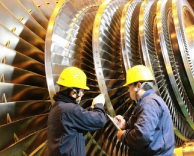How to Effectively Manage the Cost of Lubricant Filtration in Industrial Applications
Introduction
Lubricant filtration plays a critical role in maintaining the health and longevity of machinery in industries such as manufacturing, mining, and fleet operations. The costs associated with lubricant filtration, including filter replacement, oil disposal, and labor, can quickly add up, especially when working in environments with high levels of contamination. However, with the right strategies in place, maintenance teams can significantly reduce these costs while ensuring the integrity of their equipment.
The Importance of Lubricant Filtration
The primary function of lube filtration is to remove contaminants such as dirt, metal particles, water, and other impurities from oils used in machines and engines. These contaminants, if left unchecked, can lead to premature equipment failure, higher maintenance costs, and reduced operational efficiency. Efficient filtration helps enhance machine performance, reducing downtime, and extending the life of lubricants.
Common Contaminants in Lubricants
Most oils purchased today are not completely free from impurities. Even brand-new lubricants may contain microscopic particles that can clog filters and damage machinery. Common contaminants include:
- Dirt and Dust: Typically introduced from the environment or during oil handling.
- Metal Particles: Often produced from wear in machinery components.
- Water: May enter the oil through condensation or leaks.
- Additive Breakdown: Degradation of oil additives over time can introduce contaminants.
Costs Associated with Lubricant Filtration
Lubricant filtration can be costly if not managed properly. The following are some key costs to consider:
- Filter Replacement: Frequent changes can quickly become expensive.
- Labor Costs: Time spent on monitoring, inspecting, and changing filters.
- Oil Disposal: Used filters and contaminated oils need to be disposed of safely.
- Downtime: Filters that need frequent changes or fail early can lead to operational stoppages.
Key Factors for Reducing Filtration Costs
Filter Micron Size
Selecting the correct filter micron size is essential to maintaining the efficiency of lubricant filtration. Filters with too fine a micron rating can impede oil flow, while filters with too coarse a rating may fail to capture harmful particles. It is crucial to choose the right filter based on the machine’s lubrication needs and the size of particles likely to be present.
Temperature and Viscosity Considerations
Oil temperature and viscosity directly affect the performance of filters. Cold temperatures may cause oil to thicken, making it harder to pass through filters, while high temperatures can cause oil breakdown. Matching the viscosity of the oil to the correct filter micron size can prevent unnecessary strain on the filtration system.
Moisture Control
Moisture in lubricants can cause corrosion, rust, and reduced oil effectiveness. If the moisture content is low, spin-on or drop-in filters are effective at removing water. For larger amounts of moisture, advanced technologies like vacuum dehydrators are recommended, as they use heat and suction to efficiently remove water.
Technologies to Improve Filtration Efficiency
Bypass Indicators and Delta-P Indicators
Bypass indicators alert maintenance teams when the filter is nearing its capacity and may need to be replaced, preventing premature filter changes. Delta-P indicators, on the other hand, monitor the pressure difference across the filter, offering real-time insights into when a filter is clogged and requires maintenance.
Online Particle Counting
Online particle counters continuously measure the cleanliness of the lubricant, identifying contamination levels. By tracking particle counts in real-time, maintenance teams can make informed decisions about when to change filters, ensuring that they do not replace them prematurely or too late.
Automated Alerts for Filter Maintenance
Automated alerts can be set up to notify operators when filters need attention. This proactive approach ensures filters are changed based on the condition of the oil rather than relying solely on a fixed schedule.
Best Practices for Cost-Effective Lubricant Filtration
To manage the cost of lubricant filtration effectively, consider the following best practices:
- Regular Oil Sampling: Regularly check the condition of the oil and contaminants present to determine the appropriate filter change schedule.
- Train Maintenance Personnel: Equip your team with the knowledge of how to select the right filters and maintain the filtration system to avoid unnecessary changes.
- Use High-Quality Filters: Investing in high-quality, durable filters can reduce the frequency of replacements and improve filtration efficiency.
- Monitor Filtration System Performance: Use technology like particle counters and bypass indicators to ensure optimal filter performance and reduce unnecessary filter changes.
Conclusion
Managing the cost of lubricant filtration requires a balanced approach that includes proper filter selection, the use of advanced technologies, and a proactive maintenance strategy. By understanding the key factors affecting filtration efficiency and implementing best practices, maintenance teams can ensure that their equipment operates at peak performance while minimizing the financial impact of lubricant filtration.




